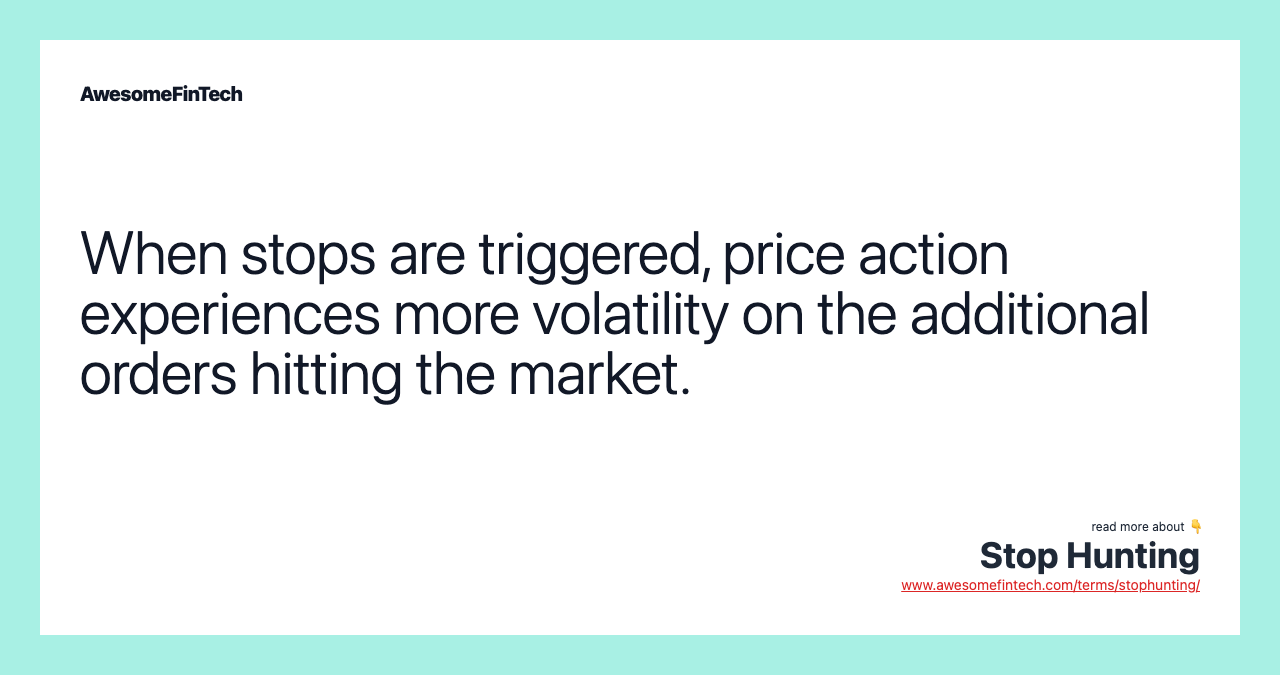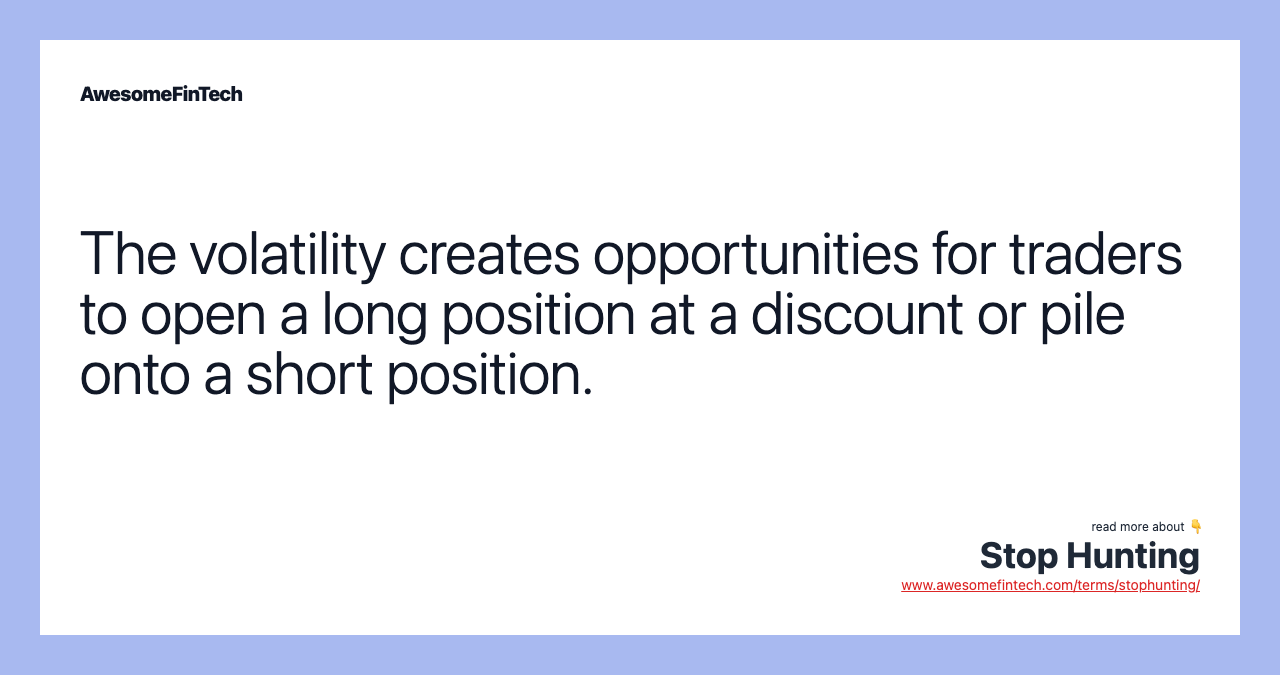Stop Hunting
Stop hunting is a strategy that attempts to force some market participants out of their positions by driving the price of an asset to a level where many individuals have chosen to set stop-loss orders. Depending on your strategy and indicators, you can participate in the stop hunting on the downside with a short position or consider it an opportunity to open a long position at a price lower than the recent trading range. 1:09 The fact that the price of an asset can experience sharp moves when many stop losses are triggered is exactly why traders engage in stop hunting. Larger traders looking to add to or exit a position can shift the price action with volume trades that amount to stop hunting due to their market impact. Stop hunting is a strategy that attempts to force some market participants out of their positions by driving the price of an asset to a level where many individuals have chosen to set stop-loss orders.

What Is Stop Hunting?
Stop hunting is a strategy that attempts to force some market participants out of their positions by driving the price of an asset to a level where many individuals have chosen to set stop-loss orders. The triggering of many stop losses at once typically creates high volatility and can present a unique opportunity for investors who seek to trade in this environment.



Understanding Stop Hunting
The fact that the price of an asset can experience sharp moves when many stop losses are triggered is exactly why traders engage in stop hunting. The price volatility is useful to traders because it presents potential trading opportunities.
For example, assume that ABC Company's stock is trading at $50.36 and looks as though it may be heading lower. It is possible that many traders will place their stop losses just below $50, at $49.99, so that they can still hold onto the shares and benefit from an upward move while also limiting the downside. If the price falls below $50, traders expect a flood of sell orders as many stop losses are triggered. This will then push the price lower and give some traders the opportunity to profit from the decline and perhaps even open a bullish position on an expected rebound to the previous range.
Stop Hunting and Stop-Loss Orders
Stop-loss orders are types of orders that are slightly more complicated than a traditional market order or limit order. In a stop-loss order, an investor will place an order with their broker to sell a security when it reaches a certain price. For example, if you own shares of company XYZ Inc., currently trading at $70, and you want to hedge against a significant decline, one option would be to enter a stop-loss order to sell your XYZ holdings at $68.
If XYZ moves below $68, your stop-loss order is triggered and converts into a market order. Your XYZ holds would be liquidated at the next available price. Stop-loss orders are designed to limit investors’ losses on a long position. A stop-loss order can protect a short position as well.
Finding the Stop-Loss Orders While Stop Hunting
Stop hunting is relatively straightforward. Any asset with significant enough market volume will be moving in a more or less defined trading zone with areas of support and resistance. The downside stop losses tend to be clustered in a tight band just below resistance, while the upside stop losses sit just above support. Larger traders looking to add to or exit a position can shift the price action with volume trades that amount to stop hunting due to their market impact.
Generally, this will be signaled on the charts by increasing volume with a clear directional push. For example, the price action might bounce off support twice on increasing volume before breaking through. Smaller traders jump on this stop hunting behavior to realize profits from the volatility it creates in the short term. Depending on your strategy and indicators, you can participate in the stop hunting on the downside with a short position or consider it an opportunity to open a long position at a price lower than the recent trading range.
Related terms:
Above the Market
"Above the market" refers to an order to buy or sell at a price higher than the current market price. read more
Broker and Example
A broker is an individual or firm that charges a fee or commission for executing buy and sell orders submitted by an investor. read more
Bull
A bull is an investor who invests in a security expecting the price will rise. Discover what bullish investors look for in stocks and other assets. read more
Countertrend Strategy
A countertrend strategy targets corrections in a trending security's price action to make money. read more
Downside
Downside describes the negative movement of an economy, or the price of a security, sector or market. read more
Exit Point
An exit point is the price at which a trader closes their long or short position to realize a profit or loss. Exit points are typically based on strategies. read more
Hedge
A hedge is a type of investment that is intended to reduce the risk of adverse price movements in an asset. read more
Limit Order
A limit order is used to buy or sell a security at a pre-determined price and will not execute unless the security's price meets those qualifications. read more
Long Position
A long position conveys bullish intent as an investor will purchase the security with the hope that it will increase in value. read more
Market Order
A market order is an instruction to a broker to buy or sell a stock or other asset immediately at the best available current price. read more